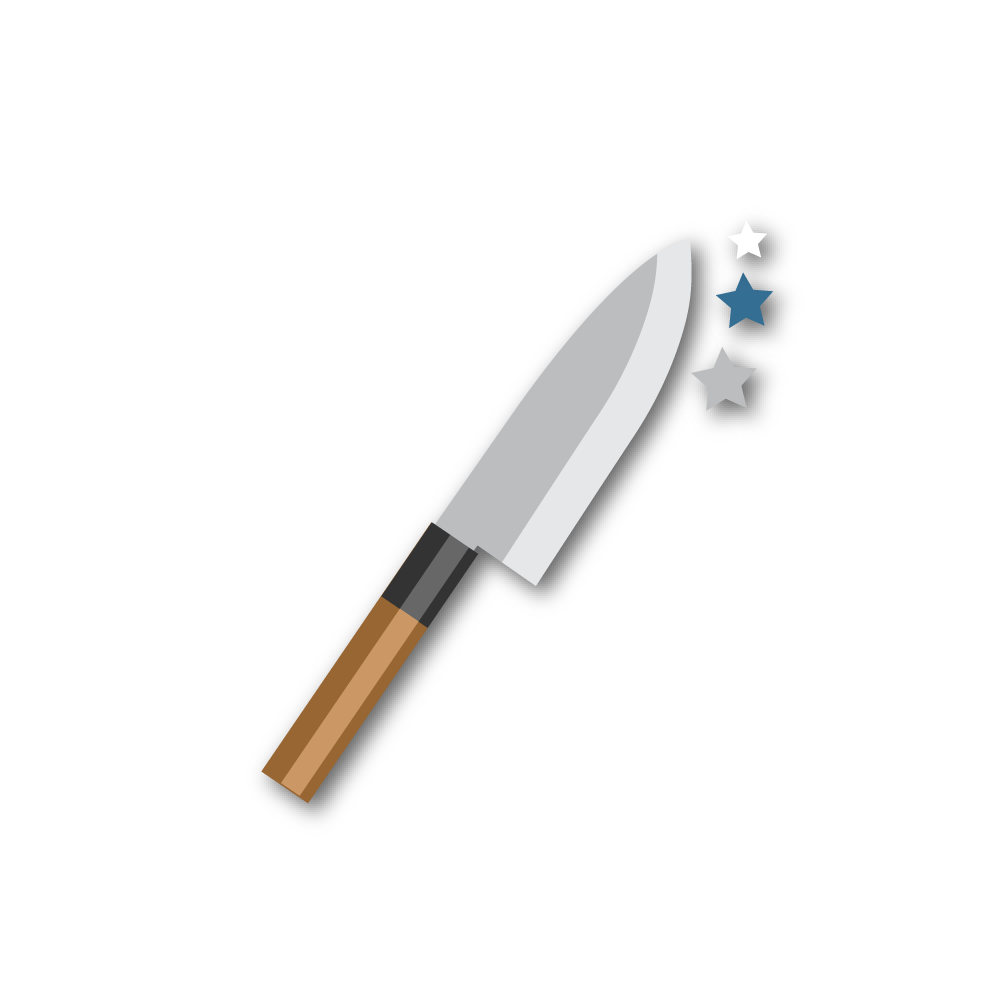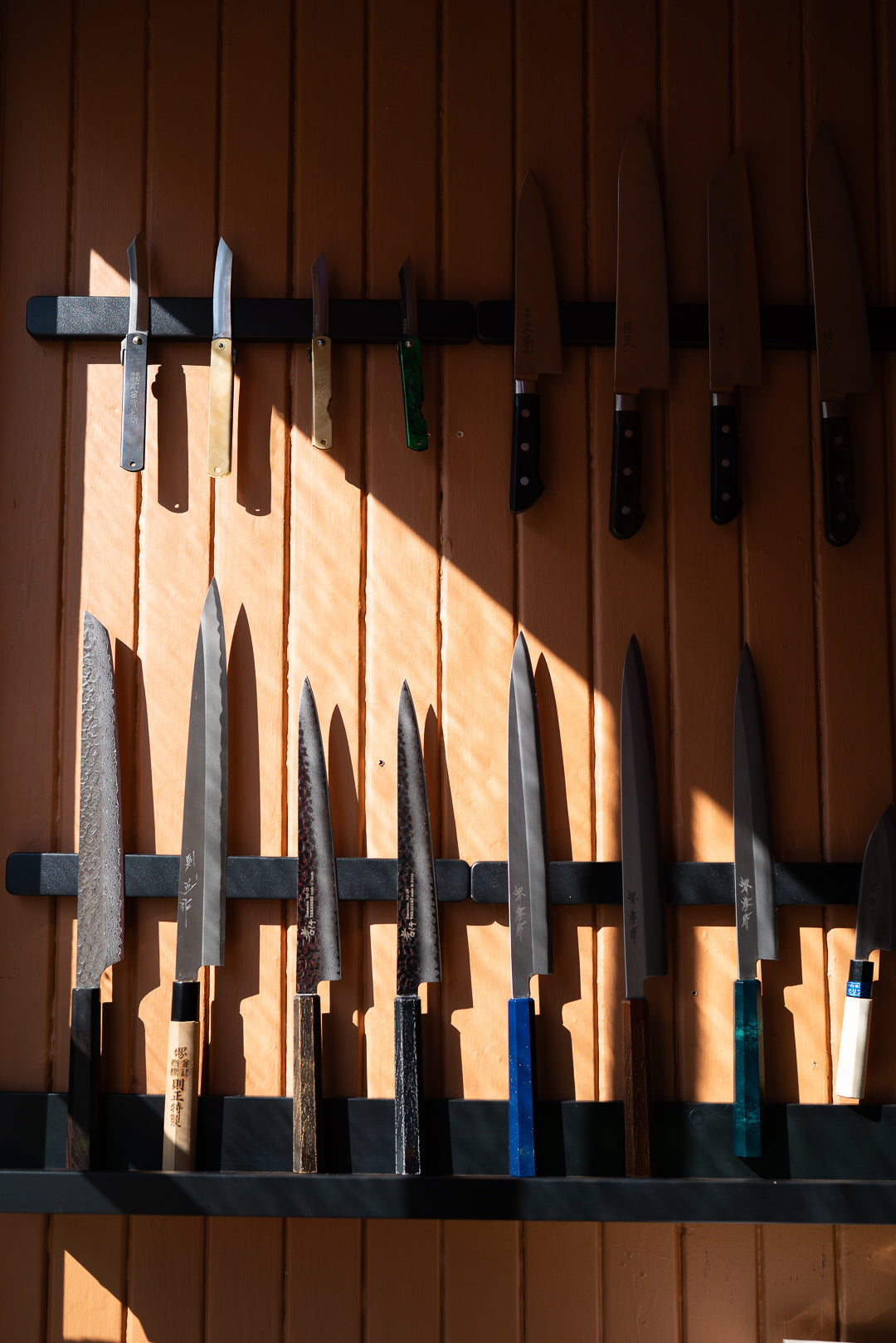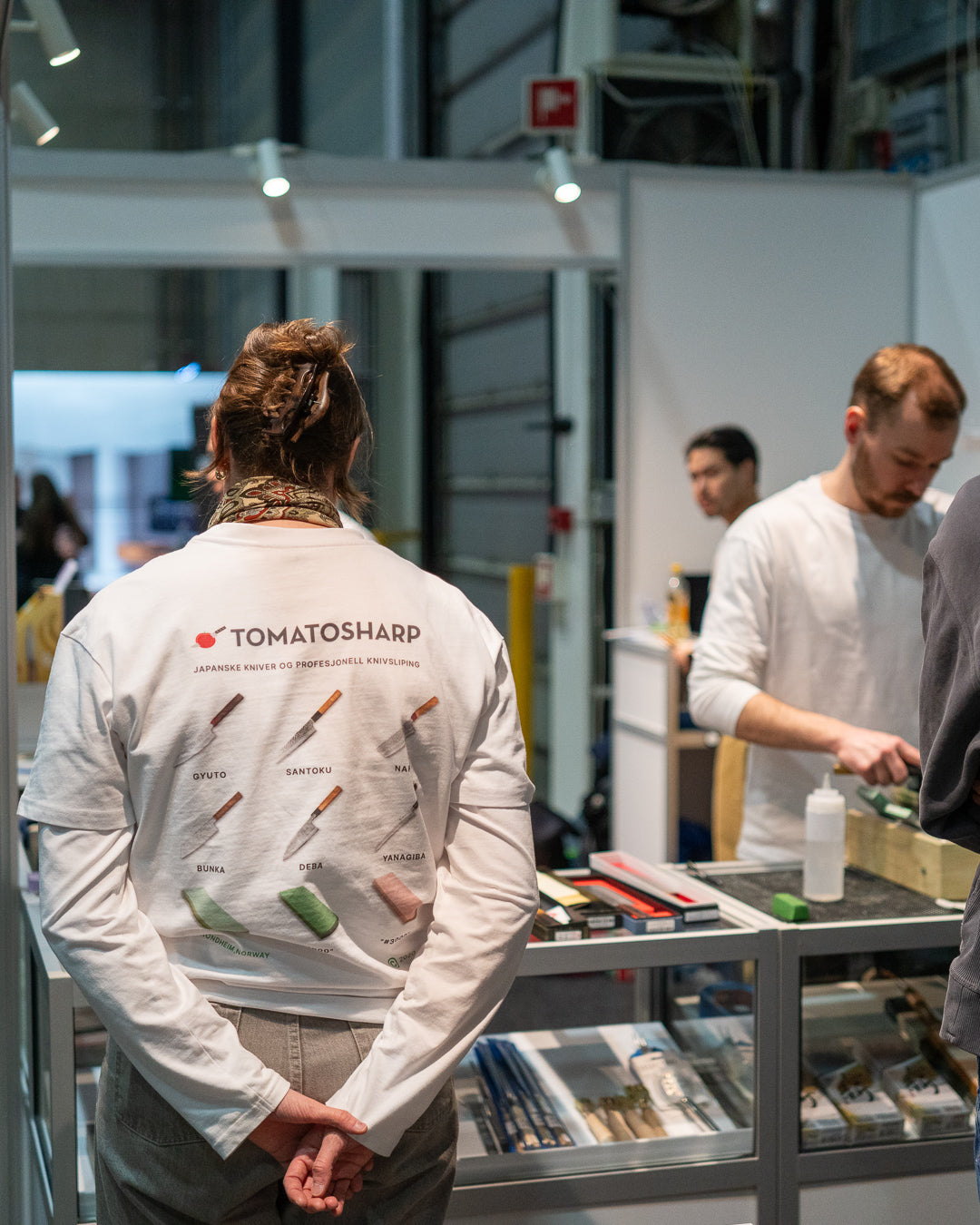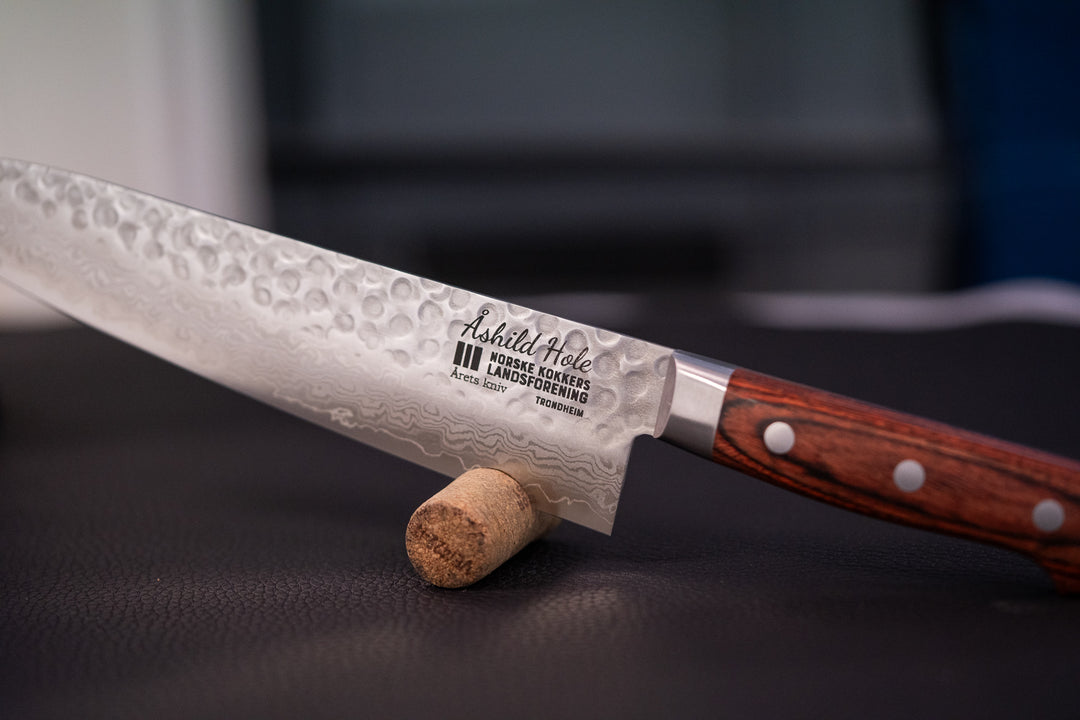HATSUKOKORO Kokugei Blue1 Gyuto 210 mm
- In stock, ready to ship
- Backordered, shipping soon
Shop nå. Betal med Klarna.

- Levering 1-3 virkedager
- Fri frakt over 1000kr
- 30 dagers åpent kjøp
| Knivtype | Gyuto / Chef's knife |
| Bladlengde | 210 mm |
| Høyre-/venstrehendt | For both |
| Slipefase | 50/50 |
| Håndtak | Wenge med amber hylse i plast |
| Hardhet | 63-64 HRC |
| Ståltype | Karbonstål |
| Stål | Blue #1 (Aogami #1) |
HATSUKOKORO Kokugei Kurouchi Gyuto is a knife for all your daily kitchen tasks . The knife is forged in Blue Steel 1 which provides exceptional durability of sharpness. Over time, the carbon steel will create something called "Patina". This gives the knife a protective layer that becomes somewhat brownish-reddish or blue, depending on what you cut. .
Kurouchi means raw or unsharpened in Japanese, and refers to the unfinished surface of the blade. This surface retains the dark, hammered texture and rust-colored appearance typical of kurouchi.
Kurouchi is more than just an aesthetic feature on the knife, and has a functional role by reducing friction between food and knife, making it easier to cut through various ingredients.
En gyuto er en tradisjonell japansk kokkekniv som egner seg til alle daglige kjøkkenoppgaver. Den kan sammenliknes med en typisk vestlig kokkekniv, men har ofte en lettere vekt og et tynnere blad.
Kniven har en lang og jevn profil med en spiss tupp, noe som gjør den utmerket for skiving, hakking og finkutting av alt fra fisk, kjøtt og grønnsaker.
Lengden gjør den ofte mer egnet for finskjæring / tranchering da man kan bevare fibrene i ett, rent kutt.
Et karbonstål med tilsetning av krom og wolfram, som gir økt slitestyrke og hardhet. Beholder skarpheten lenger enn mange andre ståltyper. Rengjør og tørk umiddelbart etter bruk; unngå langvarig eksponering for fuktighet. Over tid vil stålet utvikle en beskyttende patina som forbedrer rustmotstanden og gir bladet karakter.
Bruk
Japanske kniver er vanligvis tynnere og mer delikate enn vestlige kniver, så de er ikke egnet for å kutte gjennom bein, frosne matvarer eller harde gjenstander. Bruk et mykere skjærebrett laget av tre, plast eller gummi og skjær med en rullende bevegelse i stedet for å presse ned med kraft.
Vask og oppbevaring
Vask kniven for hånd med mild såpe og varmt vann umiddelbart etter bruk. Tørk kniven med en myk klut eller et kjøkkenhåndkle for å forhindre rust. Oppbevar kniven på en sikker og tørr plass når den ikke er i bruk. Bruk gjerne en knivblokk, magnetisk knivholder eller knivslirer for å forhindre skader på eggen. Les mer
Vedlikehold
Vi anbefaler å bruke en keramisk brynestav i kombinasjon med en lærstropp for å vedlikeholde / skjerpe eggen. Dette gjør at kniven holder seg skarp mye lenger før den må slipes på stein. Ved sliping anbefaler vi våtslipesteiner for å få best resultat, samtidig som at man fjerner minimalt med materiale.





















